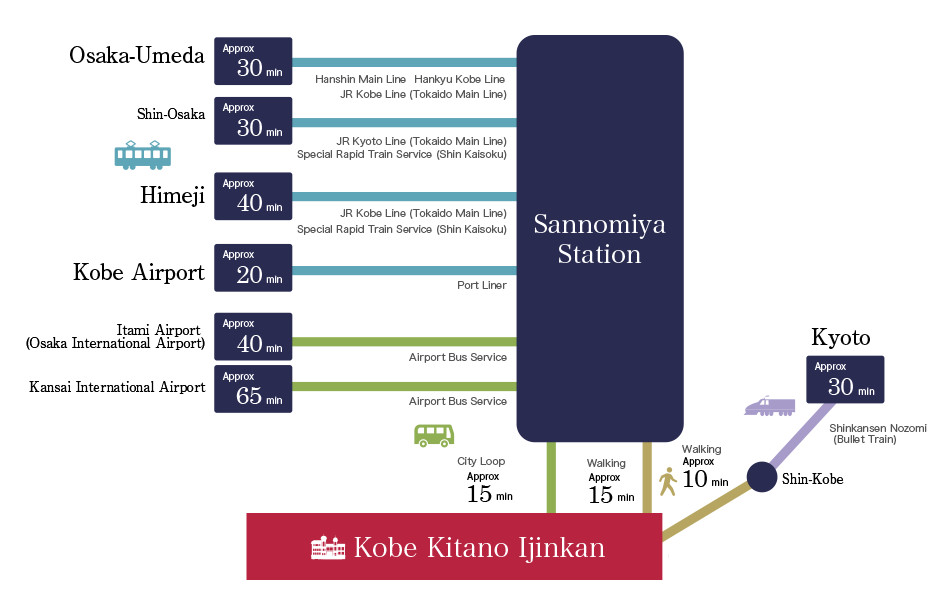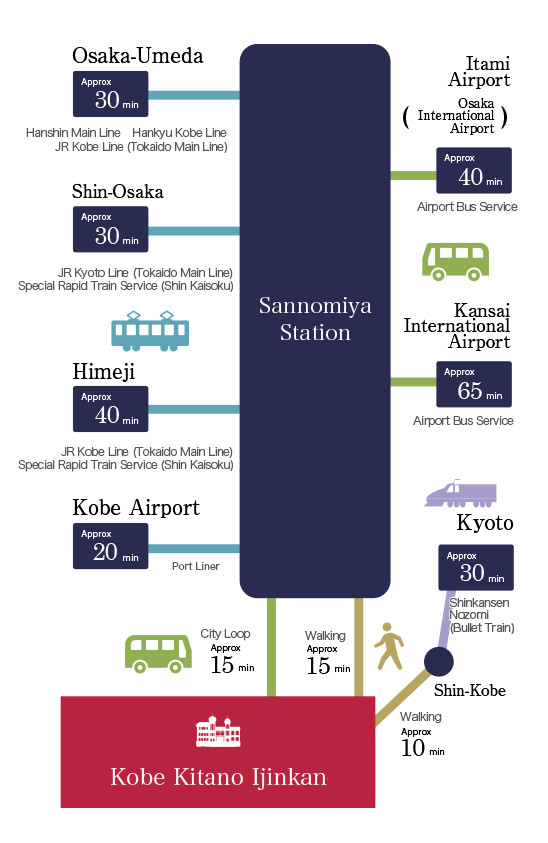Kobe Kitano Ijinkan
Highlights
-
-

UROKO HOUSE & OBSERVATION GALLERY
-
The original Ijinkan open to the public in Kobe
The residence with most Western influence of the Kitano Ijinkan houses in Kobe. Covered in a natural stone called slate, its resemblance to the scales of a fish gave the house the nickname of “UROKO HOUSE” (House of the Scales). Not only in the outside, the whole building has a distinctive elaborated design that makes it part of the National Designated Registered Cultural Properties of Japan. The building holds a collection of renowned porcelain including “Royal Worcester”, “Meissen” and “Royal Copenhagen”. There are also handmade glassware exhibitions. The sunroom, with views of the Port of Kobe, is said to be where traders watched over their boats entering and leaving the port when the Port was opened. In the garden there is a “Calydonian Boar” (nicknamed Porcellino), which is believed to bring you good luck if you rub its snout.
Next to UROKO HOUSE lies the “OBSERVATION GALLERY” where many modern, Japanese paintings are exhibited.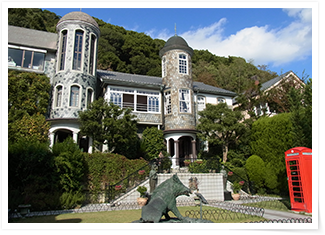

-
-
-

YAMATE 8-BANKAN
-
A house featuring bay windows in three rows
The Western-style house “YAMATE 8-BANKAN” was built in the late Meiji period (1868-1912) and has an impressive appearance oriented to the sea with trapezoidal bay windows in a row. At the entrance of the building there is a Tudor Style arch-shaped beam of piled up stones. Inside the building, the “Saturn’s chair” which is believed to grant your wishes if women sit on the right and men on the left, as well as masterpieces by the three masters of sculpture, Rodin, Boudelle, and Bernard; a Renoir’s bronze statue from his later years, a Thai Buddhist statue, and a Makonde statue from East Africa are on display.
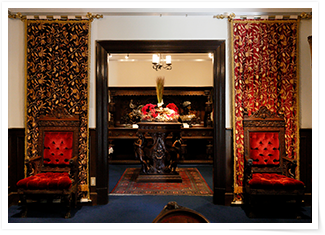

-
-
-

FOREIGNER'S ASSOC.
-
A reproduction of the social meeting point / members club for foreigners of the time
Thanks to the lion stone statue at its entrance, it was known fondly as “Lion House Building No.3” and enjoyed great popularity among foreigners. Inside the house there are a lot of different furniture and accessories used by the aristocrats, and an unusual servants room for a Western style residence. There is a wooden fireplace in the living room from a XVII century French nobleman’s mansion, embroidered with a fine delicate Lily pattern carving. There is also an Old Kitchen with unique cookware made of copper from the Edo Period, when Japanese traditional charcoal was used. In the garden, there is a horse carriage that dates back to the 1890 on display.
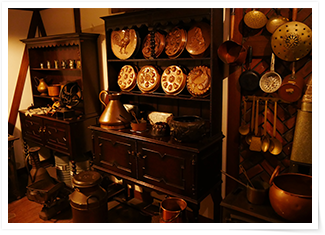

-
-
-

HILLTOP HOUSE
-
The only Oriental-style house in the Ijinkan open to the public
A precious collection of Chinese furniture, accessories, and works of art from 1368 to 1911 are displayed. You will be exposed to the extensive world of Chinese arts with both ancient and contemporary works of ink wash painting. Among these, there is a brush painting by Wang Chengxi, recognized as a leading figure in Chinese art. It is believed that if you go through the gate of the house and pass the “Komainus” (guardian lion-dogs statues) on the left, you will have success in your lovelife.


-
-
-

ENGLISH HOUSE
-
Experience the World of Sherlock Holmes's
Built in 1909 following a design by a British architect. The house stands out for having a colonial balcony, one of the most characteristic features of British architecture. The house is ornamented with William Morris fabric, proponent of the Arts and Crafts movement and also named the father of modern design. The furniture and accessories date back from the 17th century Baroque to the19thcenturyVictorian era. On the second floor there is a faithful reconstruction of Sherlock Holmes’s room as it appeared in Musgrave Ritual, the 20th work of the Sherlock Holmes series.
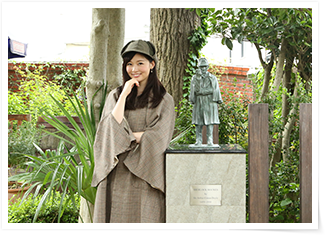

-
-
-

YOKAN NAGAYA (French House)
-
An apartment house for foreigners
Built in 1904 as an apartment house for foreigners. Designed for two families, the household is arranged in two buildings with perfect symmetry. Inside, a great number of Art Nouveau glass works from Émile Gallé, the Daum brothers and René Lalique are on display. There is also furniture from the Napoleonic period and a Louis Vuitton Antique Trunk for voyages made at the end of the 19th century. In this house you will find many French rarities with high value.
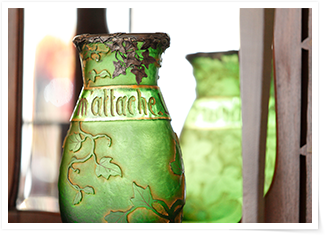

-
-
-

BEN’S HOUSE
-
The Qurious House with the nature collection
A residence totally preserved as it was built in the late Meiji period, with its moat, walls and window frames. It has been designated a “Cultural Property of Kobe” for the moat at the front door, built with red bricks ordered from Germany at that time. The house was redecorated in 2019 and displays a precious stuffed polar bear, wolf, American bison and so on.
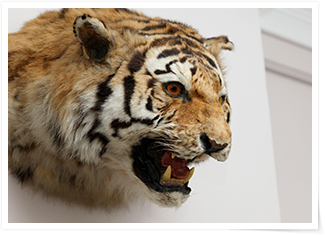

-
-
-

KOBE TrickArt
-
Look at it, touch it, take pictures!
A unique amusement spot in the Ijinkan where you can get inside the paintings and experience works that incorporate optical illusions. It is divided into six areas where you can take in plenty of stunning pictures: “Kobe Original Series”, with a collection of typical works from Kobe; “Adventure World”, “the Illusion World”, “Brain Training”, “Masterpieces” and “the Maze”. The house is a wooden building from the late Meiji period. After the war it was used as the Consulate of Panama.
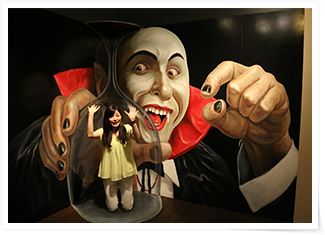

-
